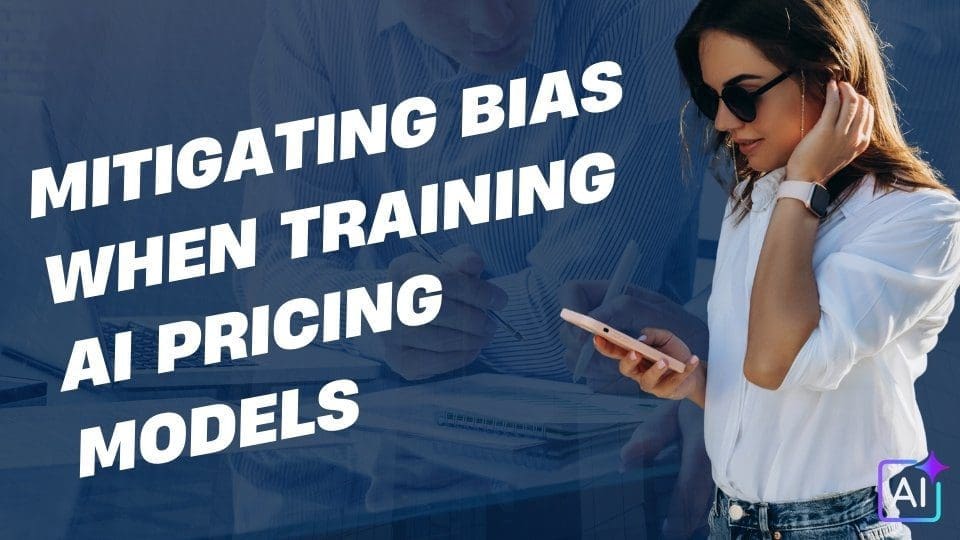AI Learning Centres:
- AI – Learn The Basics
- Get The Most From ChatGPT
- Branding in The Age of AI
- AI for Client Experience
- AI For Prospecting
- AI For Marketing
- AI For Listings & Ads
- Team Adoption of AI
- AI For PM
- AIO & Generative Search
- AI For Operations & Efficiency
- AI For Market Research & Analysis
- AI Ethics, Privacy & Compliance in Real Estate
Digital Marketing & Social Media Learning Centres:
Guides & Downloads

Mitigating Bias When Training AI Pricing Models
Why Bias Matters in AI Pricing
When an algorithm learns from past sales data, it can accidentally copy the hidden prejudices in that data. This can lead to homes in some suburbs being consistently over- or under-valued, which breaches anti-discrimination law, erodes public trust and can even spark ACCC investigations. A recent Senate inquiry warned that algorithmic bias is “a major and widely-recognised risk” for any AI system that influences financial decisions. (Australian Parliament House)
Four Common Sources of Bias
Skewed training data – if your dataset over-represents high-value city sales and under-represents regional or lower-income areas, the model will mis-price those overlooked markets.
Missing features – renovations, unique heritage elements or local noise levels may be absent, so the system ignores them.
Feedback loops – once an AVM’s estimate is published, agents may anchor on that figure, feeding the same bias back into the next round of data.
Human shortcuts – choices on which variables to include (or exclude) can reflect unconscious preferences.
A UK poll of 250 estate agents illustrates the impact: 87 % felt automated valuation models (AVMs) routinely undervalued homes in rural and low-income districts.
Step-by-Step Bias Mitigation Workflow
Collect broad, balanced data
Source recent sales across every postcode, price band and dwelling type.
Include at least 3 – 5 years of history to capture market cycles.
Clean and audit
Remove non-arm’s-length transfers, extreme outliers and incomplete records.
Map every address to its correct suburb, LGA and socio-economic index.
Engineer fair features
Exclude sensitive attributes (race, gender, disability).
Use transparent proxies (e.g. walking distance to rail rather than “wealth of neighbourhood”).
Choose bias-aware algorithms
Start with interpretable models (hedonic regression, gradient-boosted trees).
Apply fairness constraints or re-weighing where needed.
Test for disparate error
Compare Mean Absolute Error (MAE) across suburb income quintiles, regions and property types.
Flag any segment whose error exceeds the overall MAE by >20 %.
Tune and retrain
Up-weight under-served segments; try feature-neutralisation or adversarial debiasing.
Human review loop
Invite local sales agents to spot obvious mis-prices before deployment.
Monitor live performance
Re-check fairness metrics each month; add fresh sales data continuously (CoreLogic’s hedonic index revises the last 12 months for just this reason).
Practical Tips for Real-Estate-Specific Data
Blend multiple sources – state Valuer-General sales files, listing portals, council permits (to capture renovations) and satellite imagery.
Capture qualitative notes – use NLP to extract “needs renovation” or “harbour view” from agent remarks.
Geo-balance – ensure coastal, inland, metro and remote areas each form at least 10 % of the training sample.
Time-decay weighting – favour the last 12 months without dropping older cycles entirely, avoiding over-reaction to short-term spikes.
Compliance & Governance Checklist
| Stage | Must-Do Action | Relevant Guidance |
|---|---|---|
| Pre-training | Document data sources and cleaning rules | AHRC/Actuaries Institute AI & Discrimination Guidance |
| Model build | Keep an explainability report and fairness metrics | Senate Committee recommendations on transparency (Australian Parliament House) |
| Deployment | Provide a plain-English disclaimer and appeal path for homeowners | ACCC misleading-pricing rules (s 18 ACL) |
| Ongoing | Annual third-party audit of bias and accuracy | Industry best practice for high-risk AI |
Key Take-aways
Bias isn’t just unfair; it’s illegal and bad for business.
Balanced data + transparent modelling + constant monitoring = safer, more accurate pricing.
Keep humans in the loop. Local market insight remains the best guard-rail against algorithmic blind spots.
Author – Ken Hobson.






